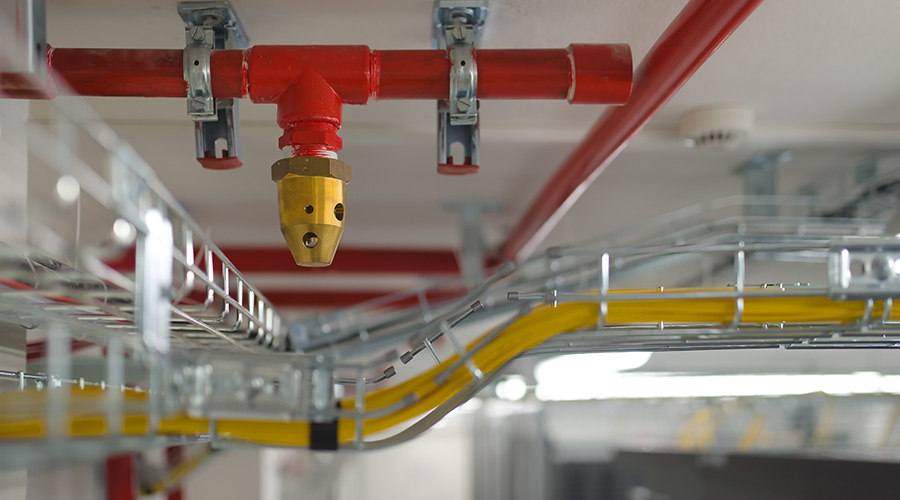Strategies Include Familiarizing Firefighters with Site and Building
Other fire-safety strategies for green buildings include familiarizing firefighters with a site and building and mitigating the risk of operable windows and double-skinned facades.
Whether or not a building includes PVs, or other non-traditional technologies that could pose a challenge to fighting a fire, like a vegetative roof, skylights, or other roof equipment, experts suggest facility managers maintain a close working relationship with firefighters.
“Building operators should have an ongoing dialogue with the local fire service,” says Gritzo. “Fire fighters want to know what they’re walking into. The more firefighters know, the more they can tailor their response. It’s always a best practice to have local fire officials walk through the building periodically.”
Hofmeister also mentions a facet of some green buildings (and traditional ones, for that matter) that many wouldn’t consider to be a fire risk: “Ponds and big landscaping features can limit fire truck access to the building,” he says. Firefighters should be familiar with a building and its site, and know of these potential obstacles ahead of time, he says.
Mitigating Risk
Another oft-cited example of the intersection of green design and fire safety is buildings that include a double-skinned façade. The large circulation passage that runs break-free from floor to floor is an energy efficiency strategy, but it also means that, without an appropriate fire stop or other fire safety strategy, there is nothing to prevent a fire or smoke from spreading quickly between floors. Gritzo mentions this as an example of where it’s important to evaluate how to mitigate risk with a non-traditional building strategy that has huge benefits in other areas, like efficiency. He says, however, that with appropriate fire safety measures, a double-skinned façade is no more or less fire safe than a traditional construction.
Hofmeister mentions operable windows — a method of natural ventilation — as another example of a green building strategy that requires a little bit more consideration to be fire safe. “They could cause issues with smoke control,” he says. So it’s important for engineers and facility managers alike to understand the implications of design decisions and be sure a plan is in place to manage risk.
“Many of the potential hazards and risks can be mitigated by known technology, such as fire sprinkler systems, additional passive fire protection, and control of ignition sources,” says Meacham. And the important thing to remember is that implementing appropriate fire mitigation strategies actually means looking at a building holistically, not on a system-by-system basis, says Meacham. “Overall, each system needs to be looked at as a package or a system-of-systems, and the overall system performance is a function of how everything works together.”
Weighing how these seemingly disparate factors — energy efficiency versus smoke control, for example — may work together is why experts say it’s important for building operators to be at the table during design. They can help architects and engineers evaluate these trade-offs, bring up questions about potential unintended consequences, and offer help with solutions. “I’d love to have FMs right there at the table with architects,” says Gritzo.
Related Topics:













